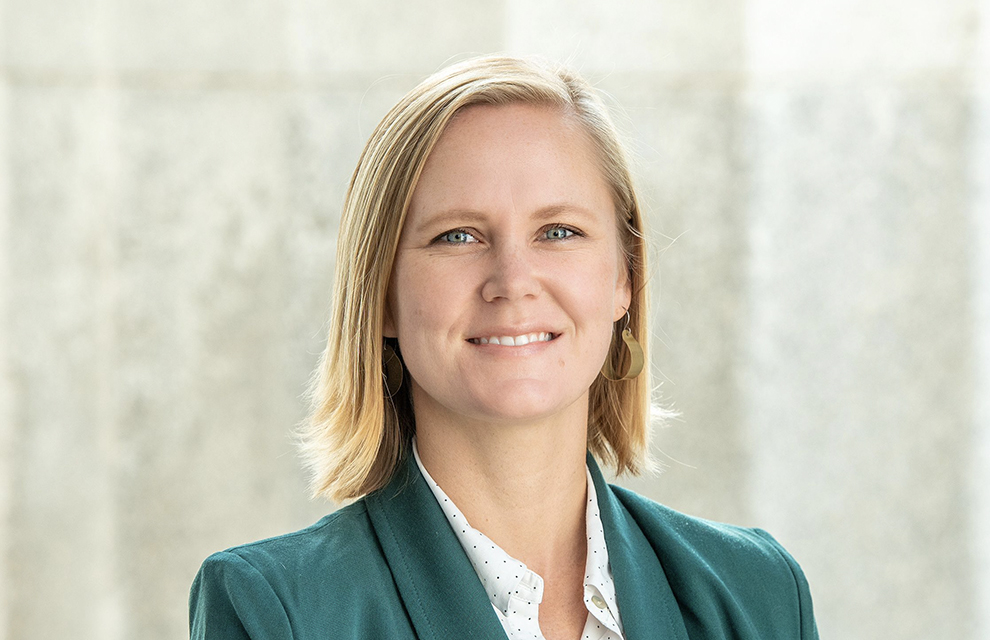Vermont’s new captive director Brittany Nevins discusses her plans for the state’s captive sector and her views on the current market
What are your main objectives as the new director of captive insurance at the Vermont Department of Economic Development?
As the new captive insurance economic development director, I am responsible for the marketing and business development of Vermont’s captive insurance industry, working closely with the Department of Financial Regulation and the Vermont Captive Insurance Association (VCIA) to strengthen the state’s reputation as the premier onshore captive insurance domicile.
When needed, I also advise Vermont’s governor and secretary of commerce on new captive insurance legislation and policy recommendations to assure a beneficial business environment for expansion within and relocation to the state. When needed, I work closely with Vermont’s congressional delegation, monitoring policy pertaining to the regulation of captive insurance and related financial services industries.
As the new director, I plan to continue to build off of the incredible work that has been done in Vermont over the last 40 years to promote the industry. In my first couple of months in the role I have been mainly focusing on learning about the industry, meeting industry leaders in all areas of the captive industry, and asking critical questions about how we can continue our momentum into the future.
I am specifically looking at how we can expand our reach to all business sizes, in all industries, around the globe. I am also hoping to improve upon the industry’s generational and diversity gaps I keep hearing about anecdotally from many leaders of the industry. To start this work, I have joined the Captive Insurance Companies Association’s (CICA) NextGen committee and have begun conversations to strategise possible ways we can move the needle in Vermont and impact the broader industry.
One thing has become clear is that Vermont has not become complacent in its success and I plan to continue to support Vermont as the state evolves to meet the needs of the industry, while maintaining the gold standard of a quality regulatory environment at the same time.
What trends are you seeing in the Vermont captive market? What do you think are the biggest talking points?
Vermont has seen firsthand that the hard market is driving captive formation. We are seeing an increase especially in property coverage with the formation of real estate and construction industry captives.
We are seeing an increase in more small and medium-sized captives licensing in Vermont, particularly in the formation of cell captives due to their cost-efficiency. Our regulatory team has been busy with the increase in interest in captive formation and we expect this interest to continue well into 2021 in Vermont and the broader industry.
Are you expecting a positive year, in terms of captive figures for the state?
Vermont now has 33 new captives licensed in 2020, a number that is growing every day, with over a month to go still in the year, well ahead of the total 22 licensed in 2019 and this doesn’t include the roughly 40 cell captives that have been licensed this year as well. This is in line with historical patterns the industry has seen when it has entered a hard market. Captives have become proven solutions during volatile times.
As a historical example, Vermont licensed 70 new captives in 2002 in response to the 11 September 2001 terrorist attacks and the increased demand in terrorism-related coverage. Again, we expect the growth of the industry to continue well into 2021.
Aside from any challenges posed by the COVID-19 pandemic, what do you think has caused the biggest upset for the captive market this year?
COVID-19 has certainly been a challenge for all insurers, but we are not seeing any particular challenge rising to a significant level of concern. Overall, we are seeing good growth in the industry and are finding that the captive industry has found innovative solutions to many challenges that have arisen during the pandemic.
Can we expect to see any new regulatory changes in the new year?
Nearly every year since Vermont began licensing and regulating captives in 1981 a bill has been proposed by the Vermont Captive Insurance Association (VCIA), with input from the regulatory team at the Department of Financial Regulation and passed by the legislature. Carrying on this tradition, a captive bill is currently being developed again this year to modernise captive statutes and regulations to keep pace with the changing needs of the industry.
What work will the Vermont Department of Economic Development be doing in the captive space over the next year?
The Vermont Department of Economic Development will continue to promote the industry locally, nationally, and around the world. The way we do so looks different in a pandemic-era. We are raising awareness about the industry and the benefits of Vermont as a domicile more virtually by developing thought leadership content, utilising social media, and speaking virtually in webinars or podcasts about the benefits of Vermont and raising awareness about the captive industry in general.
Additionally, we want to celebrate our success in the captive industry. Next year marks 40 years since the captive bill signing in 1981. While we are unable to celebrate with the industry like we typically do in person, we plan to conduct a public media campaign to highlight the captive milestones in Vermont over the years, while looking ahead at the exciting work that’s to come.





